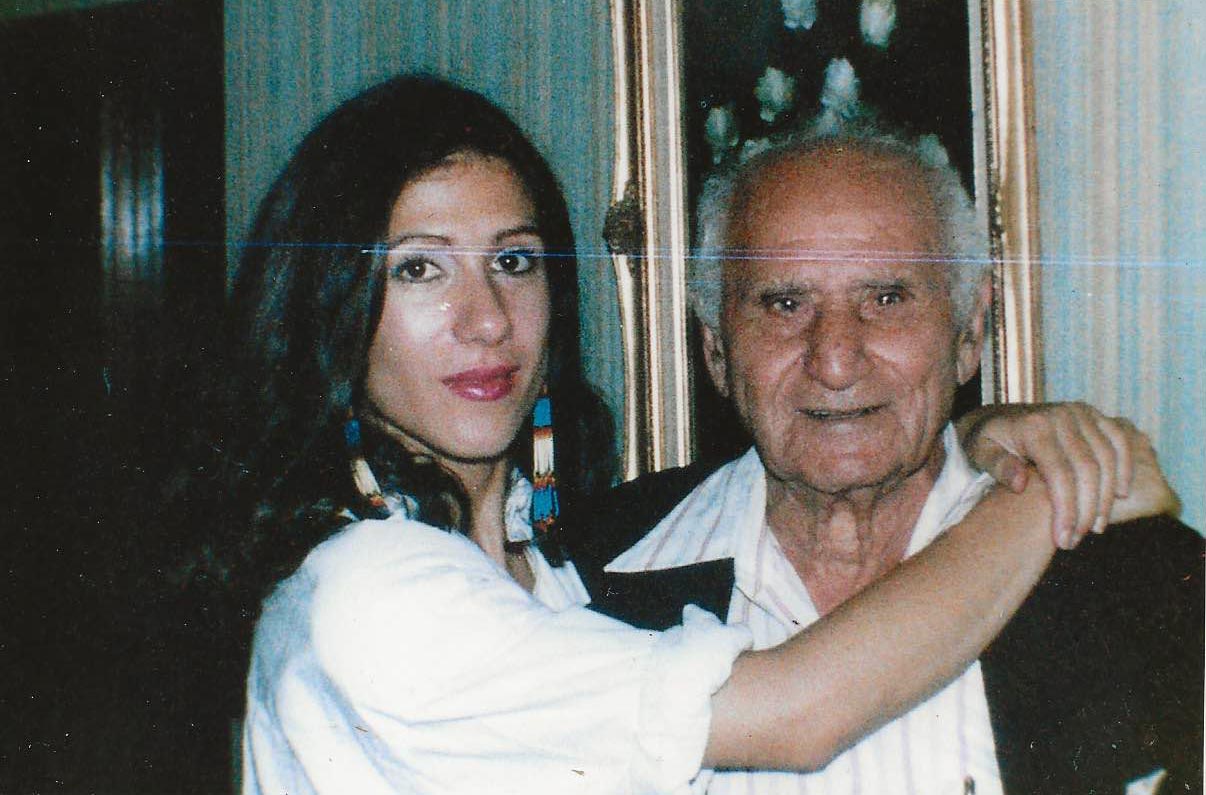For Armenian Family, Genocide Testimony Changes Lives, Community

In March of 1989, Dr. Sharon Aroian-Poiser traveled to Armenia to help children recover from the trauma of the 6.8 earthquake that crumbled 250 villages and killed tens of thousands of people just a few months before.
But the children, following the lead of the adults around them, remained silent -- until the day Aroian-Poiser pulled out her tape-recorder and demonstrated how it worked.
Almost immediately, the children lined up, and in formal recitation, one after another, told the tape recorder about the day their world collapsed.
“When they were speaking to the recorder, they felt safe. It was their voice, their story, and it gave them some control,” Aroian-Poiser said.
Aroian-Poiser had seen the objective detachment of the recorder work its magic a few years before. In 1985, when Aroian-Poiser was a graduate student, she accompanied her grandfather to Washington D.C., to a conference commemorating the 70th anniversary of the Armenian Genocide. Between 1915 and 1918, the Turkish government systematically expelled or massacred an estimated 1.5 million Armenians living in the Ottoman Empire.
Aroian-Poiser watched as elderly survivors at the conference rose to tell their stories before microphones and video recorders, many of them for the first time.
It was, in fact, the first time that Aroian-Poiser learned that her grandfather was a survivor.
“I marched every April 24 to commemorate the genocide, but I never comprehended that my own close family had been slaughtered,” she said. “I knew we were carrying this heavy load, I could feel there was this mountain behind us, but I didn’t understand the sorrow.”
Her grandfather’s revelation redirected Aroian-Poiser’s life. She wrote her master’s thesis on the lasting trauma in women survivors of the Armenian Genocide and her PhD on the children she worked with following the earthquake. In 2014, she published "Crossing the Euphrates," a personal narrative in which she addresses her grandfather about the unspoken ghosts that haunt their family.
The shift started at that conference in Washington, when Aroian-Poiser listened as her grandfather recorded an interview with the Zoryan Institute, a Toronto-based human rights and genocide awareness organization. She heard for the first time how, when Galust was 14, Turkish soldiers drove out all women and children from Khumlar, his village in eastern Turkey. Turks had already killed or deported all males from the village, including his father, and Galust had escaped dressed as a girl. On the forced march, Galust witnessed massacres and brutal sexual assaults. Then, a Kurdish stranger offered Moloian’s mother cheese in exchange for taking in her son. It was the last time Galust saw his mother, or any of his siblings.
In the years that followed the conference, Moloian never spoke of his experiences again to his granddaughter.
Then, in 1989, Moloian was killed in a hit and run while he was on his daily walk with his dog in Montebello, California.
While the family was cleaning Moloian’s apartment, Aroian-Poiser found the tattered old suitcase filled with black-and-white composition books that her grandfather had shown her a year before. The notebooks were crammed with his tiny handwriting in Armenian, Turkish, and Russian. Over the next few years, Aroian-Poiser and her husband, Dr. Dieter Poiser, as well as her parents, financed and shepherded the translation of nearly 400 pages.
Just a few years ago, Aroian-Poiser got a call from Manuk Avedikyan, USC Shoah Foundation staff member who is currently indexing Armenian testimonies to make them searchable in the Visual History Archive.
Aroian-Poiser didn’t know that her grandfather had sat for an interview in 1980 with the students of Dr. Richard Hovannisian, the UCLA history professor who established Armenian Studies as an academic discipline.
Moloian’s interview is now part of the Shoah Foundation’s Richard G. Hovannisian Armenian Genocide Oral History Collection, 1,000+ audio testimonies he and his students at UCLA collected of Armenian Genocide survivors and witnesses. Moloian’s is among 122 interviews that have been indexed so far, along with another 333 testimonies from the Armenian Film Foundation’s collection that are also part of the Visual History Archive.
Avedikyan says Moloian’s testimony is one of the most remarkable he has ever heard, both because of the vividness of his descriptions, and the scope of his experience. After enduring slavery and forced conversion following his rescue, Moloian served in the famed General Andranik’s Armenian military unit, lived under Ottoman Occupation, Armenian Independence, Bolshevik rule, and German labor and displaced persons camps during and after World War II.
The pain of remembrance is compounded because for more than 100 years, Turkey has denied that a genocide occurred.
Aroian-Poiser hopes that testimonies like her grandfather’s, as well as books, yearly commemorations, and international pressure, continue to move Armenians, and the rest of the world, toward a greater appreciation of both the beauty of the culture, and the burden they carry.
“The first step is to acknowledge the truth which opens the door to healing and moving forward,” Aroian said.